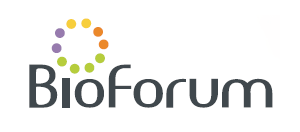21-22 JANUARY 2020, THE DAVID INTERCONTINENTAL HOTEL, TEL AVIV, ISRAEL
BIDIRECTIONAL FLOW FILTER: A NOVEL DIFFUSION-BASED SEPARATION
Vesna Bacheva, Technion − Israel Institute of Technology, Haifa , Israel & IBM Research - Zurich, Switzerland (vesna.bacheva@gmail.com)
Federico Paratore, Technion − Israel Institute of Technology, Haifa , Israel & IBM Research - Zurich, Switzerland
Shimon Rubin, Mechanical Engineering, Technion - Israel Institute Of Technology, Haifa, Israel
Govind Kaigala, IBM Research - Zurich, Switzerland
Moran Bercovici, Mechanical Engineering, Technion - Israel Institute Of Technology, Haifa, Israel
In contrast to properties such as electrophoretic mobility, size, and chemical affinity, which are the basis of most standard separation techniques (e.g. electrophoresis, chromatography, dialysis), diffusivity, despite being a fundamental property of any molecule, has not been extensively used for separation purposes. Moreover, diffusion is often an undesired phenomenon as it is the source of dispersion, known as band broadening in chromatography and capillary-based methods. In this work, we report on an entirely new method for separation of particles and molecules based on their diffusivity. This method is based on bidirectional flow - a unique flow pattern that can be established by alternating current field-effect electroosmosis (AC-FEEO), and works on any species, regardless of its charge.
Figure 1 shows an illustration of the working principle of this method that we term bidirectional flow filter (BFF). High-diffusivity particles introduced into the bidirectional flow rapidly diffuse across streamlines and experience an average zero velocity, whereas low-diffusivity particles remain on single streamlines and therefore advect through the microfluidic chamber.
Figure 2 shows experimental results of the separation of labeled antibodies from free labeling dye placed in a BFF device. The dye rapidly diffuses between streamlines resulting in a stationary front, while the antibodies remain on their individual streamlines and are advected towards the opposite reservoir where they can be collected and extracted from the mixture.
We believe this method opens the door to new on-chip applications, such as a buffer exchange process allowing to move cells or biomolecules from a complex matrix to a desired buffer, or purification of labeled antibodies or DNA from free dye following a labeling process. Moreover, the BFF may enable handling of sub-microliter samples, which is important for rare or expensive samples or for applications requiring low volumes such as single cell analysis.

Figure 1. Working principle of the diffusion-based separation. The separation is performed in a microfluidic channel where bidirectional electroosmotic flow is established. At t = 0, we place low-diffusivity (red) and high-diffusivity particles (blue) in the left reservoir. The blue particles, due to their high diffusivity, rapidly transverse across stripes and therefore experience a net-zero velocity. Contrary, the red particles diffuse slower and maintain their advection trajectory (t = t1) towards the right reservoir where they can be collected, and thus extracted from the mixture (t = t2).

Figure 2. Experimental results of separation of IgG-FITC antibodies (white, D = 4.4∙10-11 m2s-1) from Alexa flour 555 (red, D = 4.5∙10-10 m2s-1). The image is obtained by overlaying the fluorescent images of both species taker near the left reservoir. The antibodies remain on the flow stirpes leading to the right reservoir, while the dye quickly diffuses and remains near the left reservoir. The experiment is performed using PBS (pH 7.4, 0.1x).
Organized & Produced by:

POB 4043, Ness Ziona 70400, Israel
Tel.: +972-8-9313070, Fax: +972-8-9313071
Site: www.bioforum.co.il,
E-mail: bioforum@bioforum.co.il